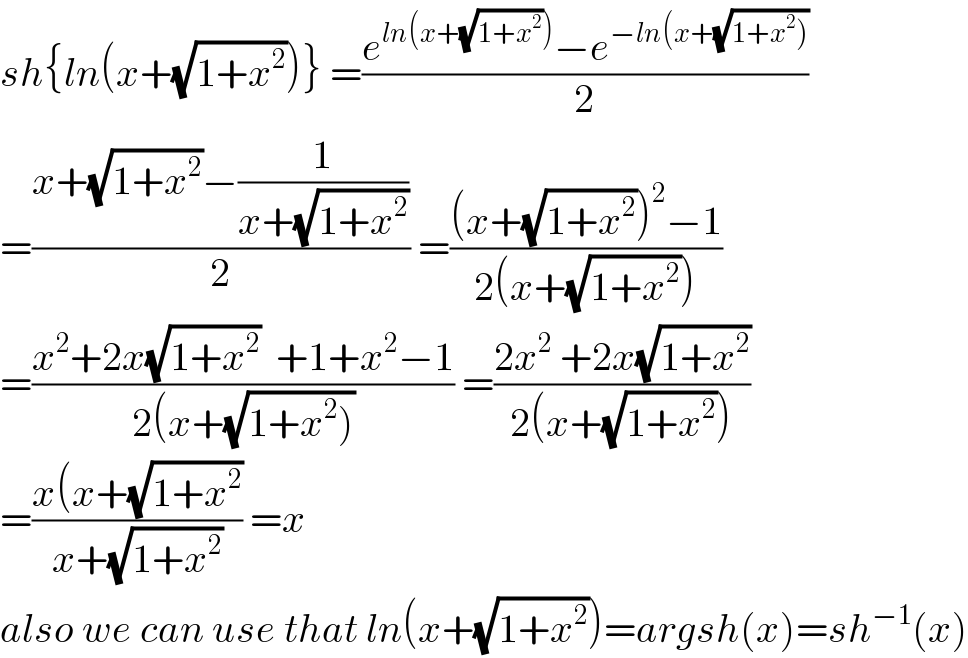Question Number 71235 by Rio Michael last updated on 13/Oct/19
![sinh[ln (x + (√(1 + x^2 ))) ] ≡ A. 2x B. (1/x) C. x^2 D. x](https://www.tinkutara.com/question/Q71235.png)
Commented by mathmax by abdo last updated on 13/Oct/19

Answered by MJS last updated on 13/Oct/19

Commented by Rio Michael last updated on 13/Oct/19

Commented by MJS last updated on 13/Oct/19

Commented by Rio Michael last updated on 13/Oct/19

Answered by mr W last updated on 13/Oct/19
![let t=ln (x+(√(1+x^2 ))) e^t =x+(√(1+x^2 )) ...(i) e^(−t) =(1/(x+(√(1+x^2 ))))=−x+(√(1+x^2 )) −e^(−t) =x−(√(1+x^2 )) ...(ii) e^t −e^(−t) =2x ((e^t −e^(−t) )/2)=x ⇒sinh t=x i.e. sinh [ln (x+(√(1+x^2 )))]=x ⇒answer D](https://www.tinkutara.com/question/Q71263.png)
Commented by Rio Michael last updated on 13/Oct/19

